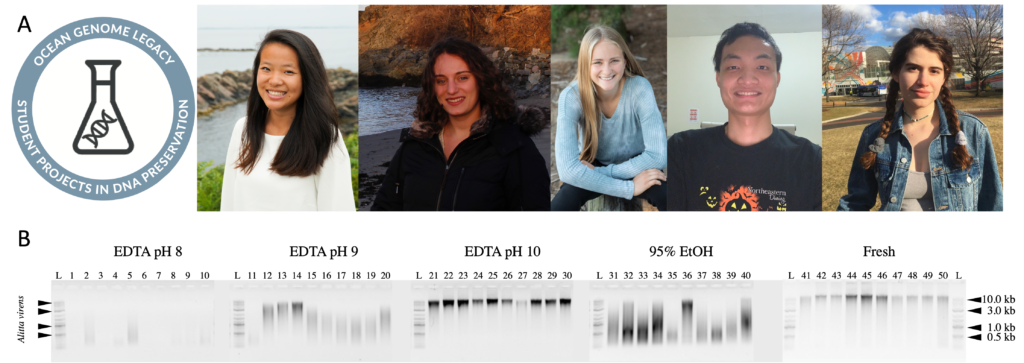This week, a team of researchers—including student scientists—from Northeastern University’s Ocean Genome Legacy Center (OGL) published a discovery that may be a game changer for DNA preservation. This finding is important because safe and effective methods of DNA preservation are required in nearly all areas of modern biology, from environmental monitoring to biotechnology, forensics, personalized medicine, and of course, biobanking.
This new discovery builds on the team’s previous work that showed that EDTA, a common food additive, can preserve DNA in biological samples without refrigeration or any of the toxic and flammable chemicals commonly used to preserve DNA today. The discovery reveals that EDTA-based preservative solutions can be made dramatically more effective by simply reducing their acidity!
Why does this simple tweak make a big difference? When an organism dies, its DNA begins to degrade immediately because enzymes in the dying cells chop the DNA into small pieces. EDTA inactivates these enzymes by binding magnesium, which they need to break down DNA. This binding becomes stronger when the acidity of the EDTA solution is decreased, making the EDTA solutions more effective at preserving DNA.

What makes this discovery even more exciting? It was made by a team of undergraduate student researchers! As part of OGL’s Student Research in DNA Preservation Program, undergraduate students Mia DeSanctis, Lizzy Soranno, Ella Messner, Ziyu Wang, and Elena Turner had the opportunity to participate in all aspects of research, from formulating a research question to designing and performing experiments, analyzing data, and writing up results. And now they have been recognized as co-authors on this peer-reviewed scientific publication—a huge accomplishment for any young scientist!
Want to contribute to this kind of life-changing research experience for undergraduate students? Support OGL here.
